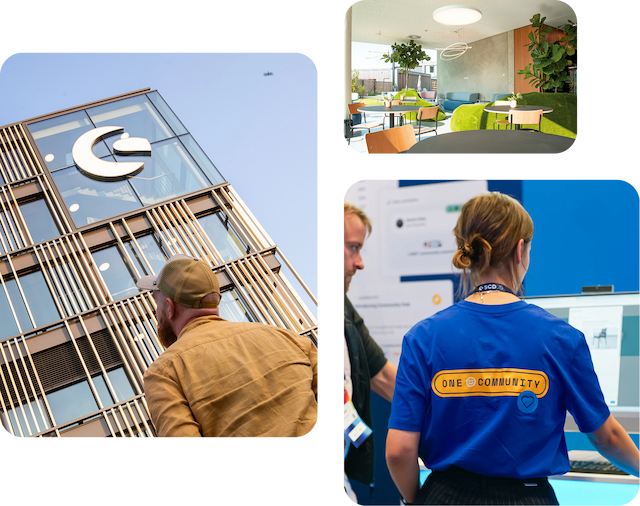
In an environment shaped by economic uncertainty, geopolitical tension, and increasing operational complexity, how are leading ecommerce brands still achieving double-digit growth? And how do they stay agile and in control – regardless of market shifts or changes in their technology landscape?
In Part 1 of our blog series “Ecommerce in uncertain times,” we explored why the choice of ecommerce platform is now a strategic leadership decision – and how prioritizing local, sovereign solutions can strengthen long-term resilience. In this second installment, we move from strategy to real-world application. Through concrete success stories, we highlight the actions global brands have taken to remain resilient, adaptable, and growth-oriented in a time defined by constant change.
Success Story 1: Beijer Ref – Scaling globally through a centralized platform strategy
Beijer Ref is a global wholesale leader in refrigeration, air conditioning, and heat pump technology, operating more than 500 branches across 28 countries. With an annual turnover of approximately SEK 32 billion and a catalog of over 200,000 products, the company needed a digital infrastructure that could support its international ambitions.

Initial situation: Fragmentation was holding back growth
Beijer Ref’s ecommerce landscape had evolved into a patchwork of systems – including TradePro, Magento, Shopify, DynamicsWeb, and several in-house solutions. This fragmented setup made it nearly impossible to enforce global standards, scale efficiently, or share innovations across markets. Without centralized control, rolling out new features or best practices became a time-consuming and inconsistent process.
The decision to go with Shopware: Centralization with flexibility
To overcome these barriers, Beijer Ref selected Shopware 6 as its central ecommerce platform. The decision was driven by Shopware’s API-first architecture, robust ecosystem, and multi-shop capability, which allows multiple stores to run from a single backend instance. This setup empowered Beijer Ref to launch region-specific online shops – with tailored designs and configurations – for markets like Germany, France, and Australia, all while maintaining a single source of product data.
Implementation: Rapid integration and scaling
Over a period of just 36 months, Beijer Ref rolled out 35 Shopware instances across 28 countries. In about 20% of these markets, Shopware replaced existing platforms; in the remaining regions, it was introduced as the company’s first centralized ecommerce solution.
Results: Significant growth in revenue and stronger customer engagement
The shift to Shopware sparked a major digital transformation. Beijer Ref increased the share of ecommerce in its total revenue from a mere 0.1% to 15% – a testament to both platform performance and internal adoption. A key enabler of this growth was the launch of a Customer Self-Service Portal using Shopware’s B2B features. This gave customers the ability to place orders and manage invoices 24/7, significantly reducing support requests and improving the user experience. Additional tools like Advanced Search, Custom Products, and Dynamic Access further enhanced product discovery and personalization – key elements in complex B2B purchasing environments.
Success Story 2: BIOMARIS – Scaling efficiency through smart automation
BIOMARIS, a legacy German brand known for its thalassotherapy-based skincare products, set out to modernize its ecommerce operations. With increasingly complex promotions, personalized offers, and manual processes weighing down the team, the company needed a solution that would reduce internal workload while boosting performance. The move to Shopware 6, combined with a targeted use of automation tools like Flow Builder and Rule Builder, delivered exactly that – and more.

Initial situation: Complexity as a bottleneck
BIOMARIS had been operating on Magento 1.3, a system that no longer met the company’s growing needs. The business relied heavily on customized discount campaigns, flexible voucher logic, and the manual management of product samples, bonus gifts, and offline coupons. These fragmented workflows limited scalability and consumed valuable time and resources.
The shift to Shopware 6: Unlocking automation potential
With the move to Shopware 6, BIOMARIS adopted a modern and flexible ecommerce platform capable of driving extensive process automation. By using the Flow Builder, repetitive tasks – like sending birthday coupons or managing ongoing promotions – could be fully automated. The Rule Builder enabled the brand to create sophisticated, targeted rules for individual customer segments, allowing for highly personalized offers at scale.
The results: Higher conversions, lower workload
The implementation of Shopware 6 brought measurable improvements in conversion rates: BIOMARIS recorded a 30% increase in conversions on mobile devices and a 10% increase on desktop. In addition to stronger performance metrics, BIOMARIS saw double-digit growth in revenue and a notable increase in order volume. On the operational side, the automation of key workflows significantly reduced manual effort. The time saved was reinvested in strategic areas such as marketing, customer service, and further development of the online store.
Conclusion: Resilience isn’t a coincidence – it starts with your platform strategy
The success stories of Beijer Ref and BIOMARIS clearly demonstrate that ecommerce resilience isn’t just about scale or market dominance. It’s the outcome of deliberate, forward-thinking decisions – especially when it comes to choosing the right technological foundation.
Beijer Ref, a global wholesale leader, used a centralized and scalable Shopware architecture to transform a fragmented digital landscape into a growth engine – unlocking significant gains in international ecommerce revenue.
Meanwhile, BIOMARIS proves that even midsized businesses with limited resources can create big impact. By embracing automation, flexible tools, and a robust ecosystem, the brand achieved measurable gains in efficiency and revenue – while freeing up internal resources to focus on what matters most.
What unites these brands is their commitment to a platform that enables rather than limits. With Shopware, they’ve chosen a solution that is modular, open, and built in Europe – with long-term value creation at its core.
In the third and final part of this blog series, we’ll explore how businesses can successfully exit closed systems and regain full control of their ecommerce infrastructure – without compromising on performance or flexibility.
Want to see more real-world examples of successful Shopware 6 migrations?











